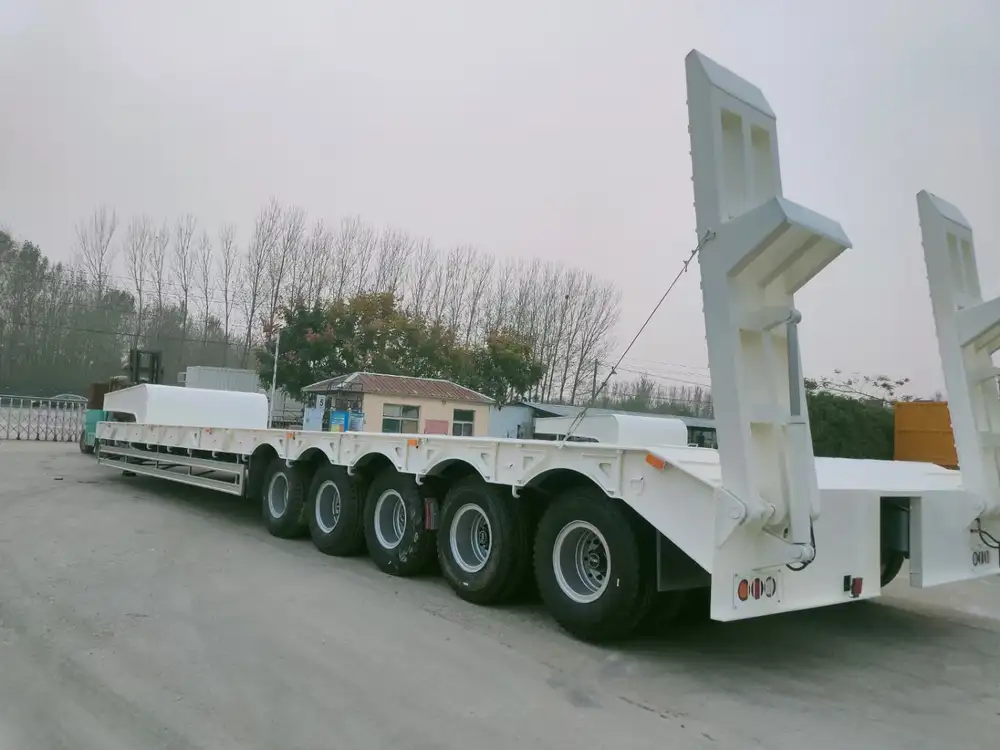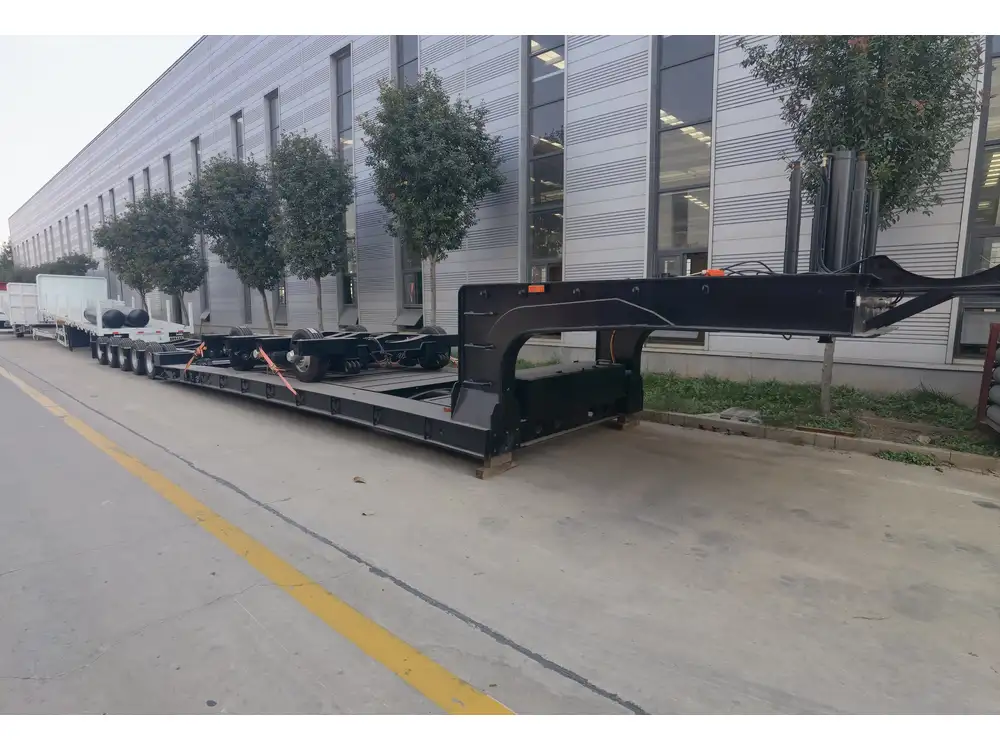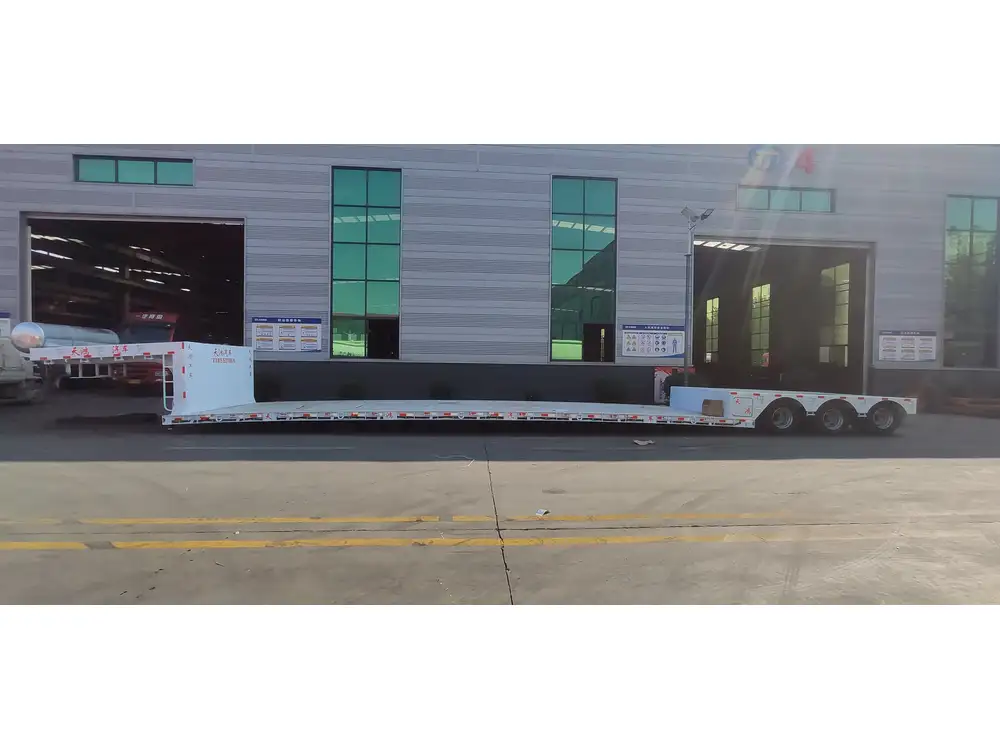Loading a bobcat onto a flatbed trailer can seem daunting, especially for those new to heavy equipment transportation. However, with the right techniques and tools, this process can be carried out safely and efficiently. In this guide, we’ll delve into detailed methods, necessary precautions, and optimal practices to ensure the loading of your bobcat goes smoothly.
Understanding the Basics of Flatbed Trailers
Types of Flatbed Trailers
Before we embark on the loading process, it’s essential to familiarize ourselves with the different types of flatbed trailers available on the market:
| Trailer Type | Description | Best Use |
|---|---|---|
| Standard Flatbed | Flat, with no sides or roof, offering total access. | General transportation |
| Gooseneck Trailers | Attached via a hitch that extends over the truck bed. | Heavy loads in larger capacities |
| Drop Deck | Features a lowered deck for easier loading. | Equipment like bobcats and other machinery |
| Extendable Flatbed | Can be adjusted in length to accommodate oversized loads. | Versatile hauling needs |
Understanding these types will help determine which flatbed trailer suits your needs when loading a bobcat.

Essential Equipment and Tools
Load Ramps
Using proper load ramps is crucial. Choose ramps that can support the weight of your bobcat; heavy-duty options are recommended. The width should securely accommodate the bobcat’s tracks.
Chains and Straps
Load securement is paramount for safety during transport. Use high-quality ratchet straps or chains designed for heavy machinery to ensure the bobcat remains securely in place.

Personal Protective Equipment (PPE)
Always equip yourself and any assisting personnel with proper PPE—helmets, gloves, steel-toed boots, and high-visibility vests—ensuring safety throughout the operation.
Preparing for the Loading Process
Verify the Load Capacity
Each flatbed trailer has a specific weight rating. To avoid accidents caused by overloading, ensure that the combined weight of the bobcat and any additional equipment or attachments does not exceed the trailer’s maximum load capacity.

Inspect the Equipment
Prior to loading, perform a thorough inspection of both the bobcat and the flatbed trailer:
- Bobcat: Check fluids, tires, and functioning parts.
- Flatbed Trailer: Examine for wear, particularly on the load ramps and securing points.
Clear the Loading Area
Ensure the loading area is free of debris, obstacles, and other equipment. A clear field makes for smoother operations and ensures safety for personnel.
Step-by-Step Guide to Load a Bobcat

Step 1: Positioning the Flatbed Trailer
Ensure the trailer is parked on stable, level ground. This stability reduces the risk of rolling or tipping while loading the bobcat.
Step 2: Setting Up Load Ramps
- Placement: Align the ramps with the trailer’s rear, ensuring they are straight and securely attached, preventing any wobble.
- Angle of Incline: The angle presented by the ramps should not be too steep; a gradual slope of 14 degrees or less is ideal to facilitate the bobcat’s ascent.
Step 3: Operating the Bobcat
- Start the Engine: Ensure the bobcat’s engine is running smoothly.
- Engage the Brake: Before attempting to load, engage the parking brake to prevent any unintended movement.
- Gradual Movement: Slowly drive the bobcat up the ramps, applying gentle and steady pressure on the throttle. Keep the weight balanced and straight to avoid slipping.

Step 4: Securing the Bobcat
Once the bobcat is fully on the flatbed trailer, it’s crucial to secure it before transport.
- Position the Bobcat: Center the bobcat on the trailer for optimal weight distribution.
- Attach Straps/Chains: Use heavy-duty ratchet straps to secure the front and rear of the bobcat. Ensure the straps are tight, preventing any movement. Utilize the appropriate securement points on the trailer:
- Fore and Aft Ties: Secure the front and rear points to maintain stability.
- Side Ties: If necessary, use side securing points for additional stability when weight shifts occurs.
Tips for Safe Transport
Maintain Visibility
When transporting a loaded bobcat, ensure that your mirrors provide the best possible visibility. Consider using flagging tape or signs to indicate the height and width of the load, enhancing safety.

Drive Carefully
When beginning your journey, accelerate gradually and take corners with care. This approach prevents potential tipping or swaying of the loaded trailer.
Communicate
If working with a team, establish a system of communication. Use hand signals to direct each other during loading and transport processes.
Troubleshooting Common Issues

Loading Difficulties
Problem: Bobcat slips while loading.
- Solution: Ensure the ramps are stable and not too steep. Adjust the approach if necessary.
Securing Issues
Problem: Load straps slipping during transportation.
- Solution: Check if the straps are rated for the bobcat’s weight. Adjust the tension and ensure no slack.
Equipment Failures
Problem: Mechanical failure of the bobcat.
- Solution: Regularly maintain and service the equipment to minimize breakdowns during loading.

Conclusion
By following this comprehensive guide on how to load a bobcat onto a flatbed trailer, you can mitigate risks involved in heavy equipment transportation. From careful preparation and appropriate use of tools to secure loading and safe transport practices, each step plays a vital role in ensuring successful outcomes. Remember that safety should always be the number one priority in any loading operation.
Frequently Asked Questions
What is the maximum weight a flatbed trailer can carry?
- The weight capacity varies widely by model. It’s important to check the manufacturer’s specifications.
Can I load a bobcat without ramps?
- Loading without ramps is not advisable due to safety risks and potential damage to the equipment.
What types of bobcats are there?
- Bobcats come in various models, including compact track loaders and skid-steer loaders, each requiring specific loading considerations.
Is it necessary to use PPE during loading?
- Absolutely; PPE is crucial for protecting personnel from potential accidents.
Recommended Tools for Loading Bobcats
For a seamless loading experience, consider investing in:
- High-capacity load ramps
- Ratchet straps specifically designed for heavy loads
- A stable and structured flatbed trailer
- Personal Protective Equipment (PPE)
With these elements in place, you’re well-equipped to safely load and transport your bobcat, ensuring efficient and secure operations every time.



